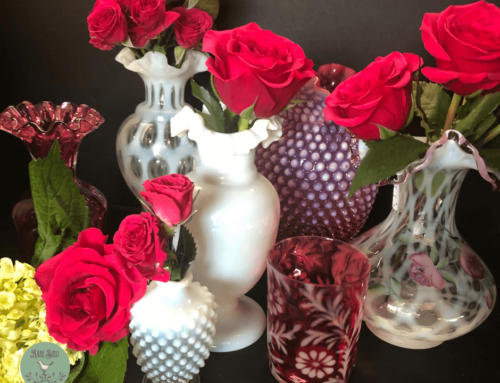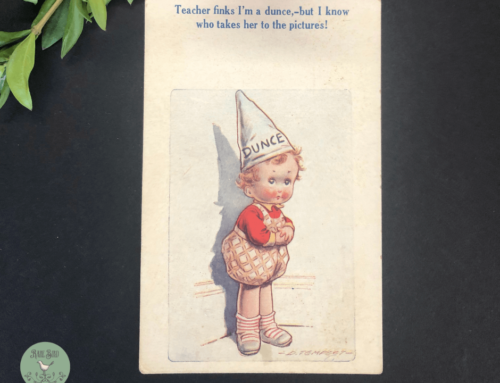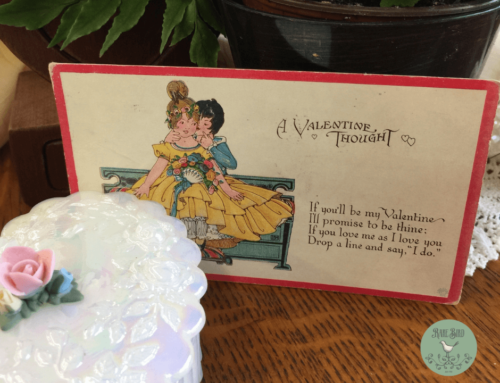We are all familiar with them, but do we understand why particular Valentine motifs are used and what they mean? Read along with Rare Bird Antiques as we take a closer look.
1. Colors
Red, white and pink of course. Red is the color that represents love, passion, romance and even lust. White is representative of purity and innocence. Pink is the color of affection and sweetness and is of course a combination of red and white.

2. Hearts
No one is exactly sure why hearts are associated with romantic love, but the most logical explanation is that the symbol of the heart has its roots in the writings of Galen and Aristotle. Aristotle held the belief that the heart is the seat of human emotions, we still believe this today.
The Arrow in the Heart represents man and woman and speaks to the vulnerability of love. It has a sexual connotation with the arrow representing the male piercing the heart – the woman’s body.

3. Cupid
Speaking of desire, that brings us to Cupid. Cupid is the representation of Eros, the Greek god of love. In art, Cupid became a baby as a way of “limiting the power love has over us” according to Catherine Connors, PhD, a classics professor at the University of Washington in an article by Reader’s Digest.
The Romans often re-invented Greek gods and they gave Eros the name Cupid which means “desire.” The representation of the cute, chubby baby with wings just seemed a natural fit for Valentine’s Day. And keep in mind, his (Eros/Cupid’s) mother was the goddess of love – none other than Aphrodite herself.

Cupid’s Message – vintage Valentine’s Day Card – public domain
4. Flowers
Giving flowers has become synonymous with Valentine’s Day and the history of doing so can be traced back mainly to Victorian times when the practice of floriography was immensely popular. Floriography is the language of flowers. Each flower and even the color of the flower held meaning. History is full of stories of particularly women, using flowers to convey secret messages to lovers and friends. Sometimes, these floral messages were even delivered to their enemies.
Be sure to check out Floral Meanings by All Florist in the UK for advice on meanings. You certainly do not want to send the wrong message!

5. Candy
Candy, or more particularly chocolate, became the gift of choice (or expectation) on Valentine’s Day. In 1861, according to the Smithsonian Magazine, chocolate maker, Richard Cadbury, began adding cupid and rose shaped chocolates to boxes which could later store love letters and mementos. It was an ingenious marketing plan to make use of the pure cocoa butter he extracted from his chocolate drinks. Of course, the idea took hold with other chocolatiers and the famed American chocolatier, Milton Hershey, developed his chocolate kisses in 1907.
And the rest dear friends, is history. Today, according to Valentine’s Day consumer insights, 36 million heart shaped boxes are sold for the holiday.

6. Love Birds
Possibly the favorite of the Rare Bird, Love Birds finish up our list. As we discovered in our article on “Valentine’s Day Cards – A History Lesson,” in the Middle Ages it was believed that birds found their mates in February. What could be more romantic or fitting than to have a lovely bird couple illustrating your Valentine’s Day card.

Love Birds – Valentine’s Day Card – Circa early 1900’s – public domain.
While there are many other motifs that can be tied into this holiday, we think these six top the list.





